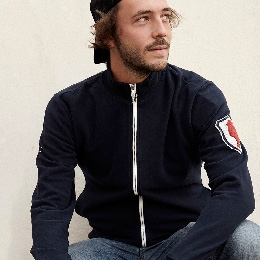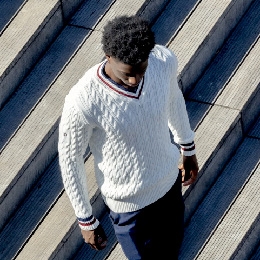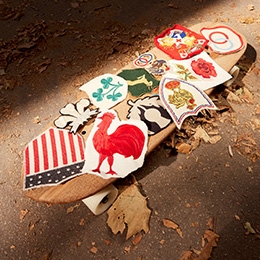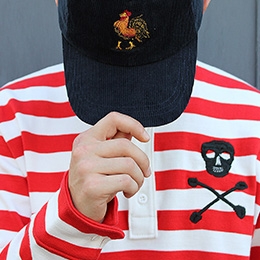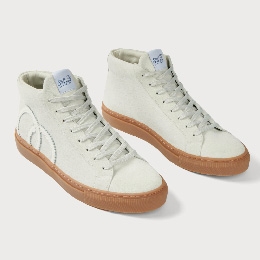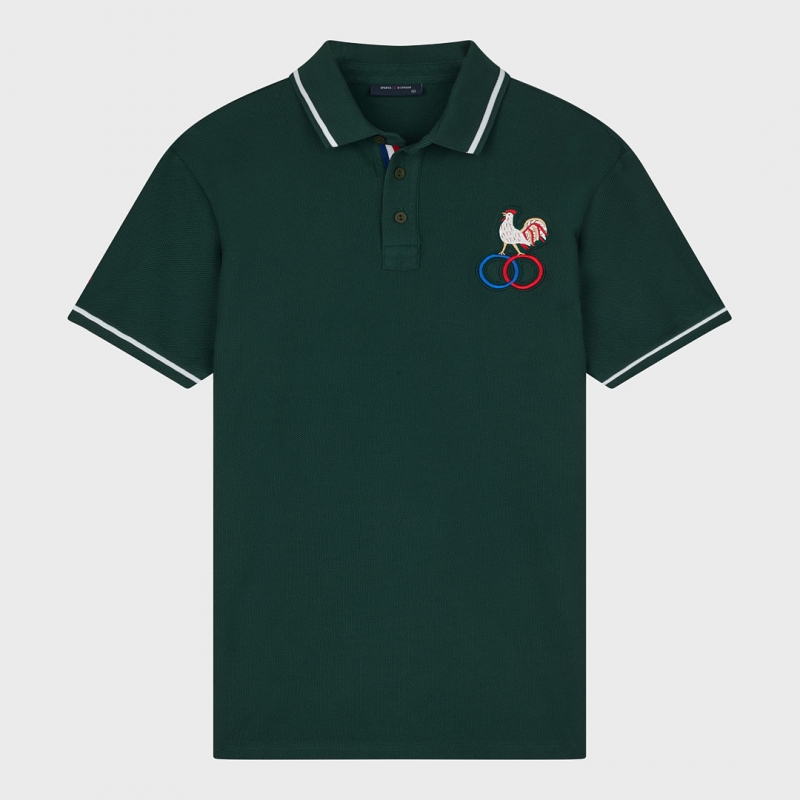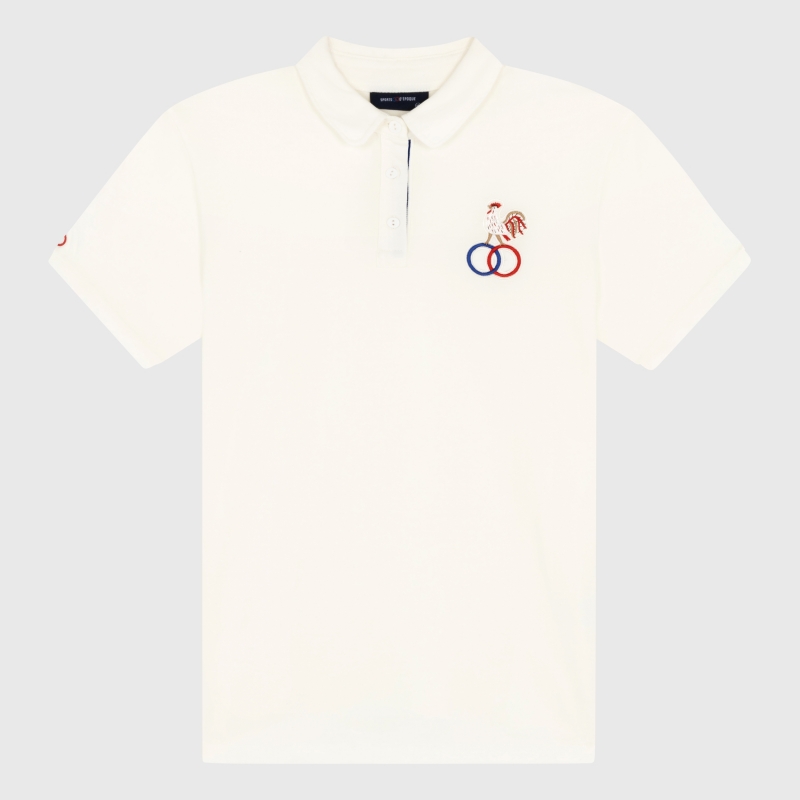Blog - Tennis
SPORTS AND HISTORICAL ANECDOTES,
TO SHINE IN SOCIETY
Tennis
DO YOU KNOW WHO THE FIRST AFRICAN AMERICAN WOMAN TO WIN A MAJOR TENNIS TOURNAMENT WAS?
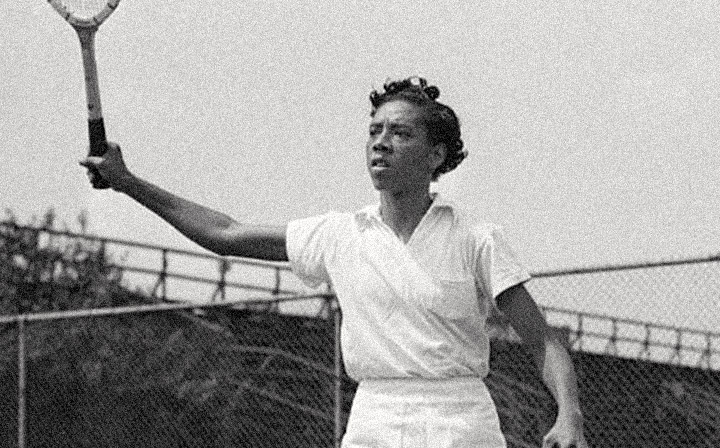
If you were thinking of Serena or Venus Williams, think again!
It's May 26, 1956, on the famous clay courts of the Porte d'Auteuil stadium. A 29-year-old African American named Althea Gibson manages to win her first major tournament.
To give you an idea of the historical significance of this title, it was the first time an African American person had won a trophy of this magnitude, at a time when tennis was still primarily seen as a "white sport".
This happened four decades before the Williams sisters and 12 years before the legendary Arthur Ashe, the first man to achieve the same feat.
Althea Gibson won a total of 11 major titles: 5 in singles and 6 in doubles, between 1956 and 1958. An incredible achievement, yet Althea is largely unknown to the general public. Unlike her male counterpart, she hasn't entered the pantheon of tennis legends, and very few tributes are paid to her. This forgotten tennis player nevertheless worked for the place of African Americans in a deeply racially segregated America.
All her titles were the result of a long struggle against racism and prejudice, often her toughest opponents on the courts. She broke barriers and obstacles with each victory, often not allowed to stay in hotels where whites stayed, or drink from a fountain reserved for whites.
Now mostly forgotten, we at Sports d'Epoque are proud to be able to tell, and therefore keep alive, the story of the Great Althea through our clothing. Check them out on our website.
THE FIRST MEDALIST IN HISTORY
If you've ever wondered who the first woman in history to win a gold medal was, the answer is Charlotte Cooper.
Born in 1870, this British tennis player took part in the first games where women were allowed to compete, those of 1900. By winning the women's singles on July 11th, she entered posterity as the first woman in history to win a gold medal.
WHO WAS THE MOST COMPLETE AND FORWARD-THINKING FEMALE ATHLETE OF THE 20TH CENTURY?
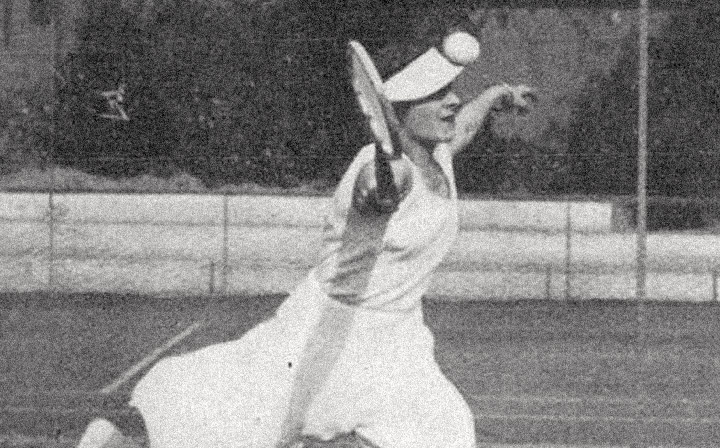
Did you know it’s possible to live multiple lives at once? If you don't believe it, then discover the story of Lilí Álvarez.
Born in Rome on May 9, 1905, Elia María González-Álvarez y López-Chicheri, better known as Lilí Álvarez, was a multi-sportswoman, writer, and journalist from Spain. This woman was a great pioneer of Spanish sports, women's sports, and the feminist movement. Her favorite sports included skiing, mountaineering, billiards, and horseback riding. But she particularly excelled in three other sports: tennis, figure skating, and motor racing.
Regarding tennis, Lilí Álvarez dominated Spanish tennis in the 1920s, a sport through which she made history by becoming the first Spanish woman to participate in the world's biggest sporting event, in Paris in 1924. What other achievements can we find in her extensive list of accomplishments? Lilí Álvarez reached the final three years in a row on the legendary grass courts of London, between 1926 and 1928, and won the women's doubles on the clay courts of Porte d'Auteuil in 1929.
Her record is impressive: 40 singles titles, 19 women's doubles, and 21 mixed doubles. The London Daily Mail proclaimed her the "second best female tennis player in the world" of her time, just behind one of the greatest players of all time: Helen Wills.
Did you know she was also the first woman in the world to play on the court wearing a skort? A scandal for her time, but progress for women's tennis thanks to this more comfortable garment facilitating freedom of movement.
While at the peak of her tennis career, Lilí Álvarez ventured into motor racing in 1924, winning the Catalonia championship at 19 years old. The only title in her record, she's the only woman to have won a de facto male automobile category, as there were no female competitions.
Although tennis forged her legacy, Lilí Álvarez's favorite sports were winter sports, particularly figure skating and skiing. Learning to skate at the age of 4, she won her first championship in St. Moritz at just 12 years old. In 1921, at the age of 16, she won the international gold medal in figure skating. A serious injury led her to give up skating (and focus on tennis at the same time) just after being selected to represent Spain in Chamonix in 1924. To her delight, she resumed winter sports through alpine skiing, winning the Spanish championship in 1940. She defended her title in 1941 but was excluded by the federation. For what reason? She accused them of sexism on the spot for putting women on hold while the men had already started the descent.
A sports pioneer, she was also one of the first women to cover major sporting events for Spanish and European press, publishing her sports columns in the 1920s and 1930s, and more regularly in the 1960s. Known for her modern, daring, and audacious play, her writing was just as bold. She became an early figurehead of feminism in Spain, fighting all her life for equal opportunities and an end to discrimination against women. In honour of her life and career, Spanish sports journalists who contribute to making women's sports visible and advocating for gender equality in sports are awarded the Lilí Álvarez Prize.
ANN WHITE, WHITER THAN WHITE?
We all remember André Agassi's fluorescent outfits, Brazilian Kuerten's colourful Polos and Serena Williams' outfit at the 2004 US OPEN! The prize for the most unusual outfit undoubtedly goes to Ann White, who wore a white lycra outfit (from head to toe) in 1985, during the Wimbledon tournament.
The outfit was tight-fitting and slightly transparent. The legendary Martina Navratilova immediately reacted: "When you can't attract attention with a racket in your hand, you have to use something else," she said.
WHO SAID "YOU CAN'T BEAT
VITAS GERULAITIS 17 TIMES IN A ROW"?
Vitas Gerulaitis, the famous tennis player of the 70s, was renowned for being a generous and engaging man. He also had a sense of humour and self-mockery, as evidenced by the fact that, after being beaten 16 times in a row by Jimmy Connors, he finally defeated the latter and said: "And let that be a lesson to you all. Nobody beats Vitas Gerulaitis 17 times in a row, nobody!"

TENNIS CHAMPION AND
WORLD CHAMPION IN PADEL TENNIS!
Gael Monfils, the French tennis player, is also world champion in padel tennis, a discipline derived from tennis that is highly developed in Spain and South America. He entered the competition by chance in 2006 (after an early exit from a tournament in Las Vegas) and won!
WHO WON WIMBLEDON IN 1929?
With his victory in Paris and Forest Hills, Henri Cochet became world number one in 1928, and remained so for three consecutive years. He triumphed again at Wimbledon in 1929, then at Roland Garros for the third and fourth times in 1930 and 1932.

THE FIRST FRENCH DAVIS CUP FINAL
In 1925, after a legendary victory over the Australians, France contested the Davis Cup final against the United States for the first time in its history.
Before and after the match, the French wore a jacket embroidered with a cockerel standing proudly on two interlaced rings. In memory of the Musketeers' early tennis exploits, SPORTS D'EPOQUE has produced a limited-edition polo shirt featuring the embroidery of this majestic cockerel.
WHO WAS NICKNAMED "LA DIVINE"?
Suzanne Lenglen began playing tennis at a very young age, coached by her tennis-loving father, who had decided to make his daughter a champion. In 1914, at the age of 14 and a half, she became world champion on clay, beating England's Golding in two sets. It was the start of an exceptional career that was temporarily interrupted by the outbreak of war in 1914.
Apart from 1924, when she was ill, Suzanne Lenglen dominated tennis until 1926. It was then that talk began of a possible rival; the 1924 Olympic champion, the American Helen Wills. The 18-year-old, who had already won the American title three times, came to Europe in the spring of 1926 to challenge the French player known as "La Divine".
The two young women stayed on the Côte d'Azur for the traditional winter tournaments. After carefully avoiding each other for a few weeks, they finally both entered the Cannes tournament. The long-awaited meeting between the two players finally took place on 16 February 1926 on the court of the Carlton Hotel.
The match, announced in the press, attracted a huge crowd of fans. All 3,000 seats were sold out within an hour. The capacity of the stands was small, but they were packed to the rafters, with spectators taking to the roofs of nearby houses. The referee was Major Hillyard, secretary of the Wimbledon club and referee of the women's finals at the London tournament. He had come especially for the occasion, which just goes to show how important this event was!
It was a magnificent spectacle. Suzanne won 6-3 8-6. The two players agreed to meet again at the French Open in June. In the end, it was to be a missed appointment, and the match played in Cannes was to remain their one and only meeting. In the meantime, the American suffered an appendicitis attack and had to give up all competitions for the rest of the year.




